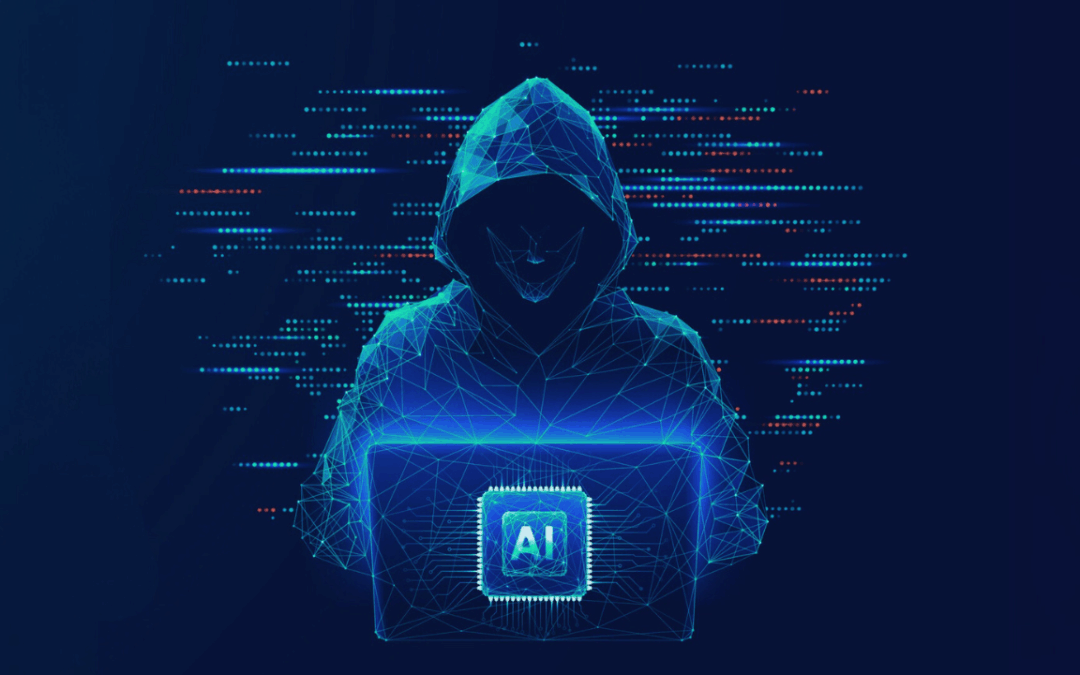AI in the Wrong Hands: Cybercriminals Are Using AI — But You Can Fight Back
Artificial intelligence (AI) is transforming all sectors — including the realm of cybercrime. Today’s attackers are smarter, faster, and more dangerous, thanks to AI-powered tools that automate attacks, mimic human behavior, and exploit vulnerabilities at scale.
For Managed Service Providers (MSPs) and business leaders, the message is clear: AI is no longer optional — it’s a battlefield.
Here’s how cybercriminals are misusing AI (as of 2025), and how you can fight back with intelligent, proactive cybersecurity.
How Cybercriminals Are Weaponizing AI
Cybercriminals are evolving beyond lone basement hackers. In 2025, many operate in sophisticated networks, leveraging AI to maintain an edge over traditional defenses. Some of the most alarming and confirmed methods include:
Smarter Phishing & Thread Hijacking
AI scrapes public and internal data (social media, websites, internal comms) to generate hyper-personalized phishing emails. These messages can mimic tone, style, and conversation context, making them harder to detect. Some attackers hijack existing email threads to insert malicious content. Gen Digital Newsroom+3DMARC Report+3Forbes+3
AI-Enhanced Malware & Evasion
Attackers are using AI to mutate malware dynamically, adapting its behavior to evade detection. Generative models help even low-skilled threat actors generate code, evasion methods, or payloads. Such adaptive malware is now common in sophisticated breaches. Cybersecurity Dive+3SentinelOne+3ThreatDown by Malwarebytes+3
Deepfakes, Voice Cloning & Impersonation
Deepfake audio and video are now fields of legitimate risk. Voice cloning in vishing campaigns has seen explosive growth; one report noted a 442% increase in voice phishing in late 2024. The Hacker News
While deepfake attacks are rising, the portion that result in major monetary theft remains lower (e.g. ~5% of organizations report deepfake incidents causing loss). Cybersecurity Dive
AI as an Attack Surface
Threat actors are now targeting AI systems themselves—via prompt injection, model poisoning, adversarial attacks, or supply chain vulnerabilities in AI APIs. CLTC+3Fortinet+3SoSafe+3
Shadow AI (unauthorized AI use in organizations) is also a rising internal risk. IBM
Automated Recon & Multi-Agent Coordination
AI enables reconnaissance across thousands of targets, assigning risk scores to potential attack vectors. Some groups are experimenting with multi-agent systems or “agentic AI” that orchestrate parts of an attack autonomously
Campaigns increasingly combine channels—email + voice + SMS + social media—to evade detection
Overarching Trends & Stats
-
87% of organizations report facing at least one AI-powered cyberattack in the past year. The CFO
-
AI now tops ransomware as the greatest concern among security leaders.
-
Globally, cybercrime costs are projected to reach ~$10.5 trillion by 2025. World Economic Forum
How MSPs & Businesses Can Fight Back in 2025
To defend in the AI arms race, MSPs and businesses must adopt AI, but with rigorous control, oversight, and integration into a layered security strategy.
- Real-Time Detection & Behavior Analysis
Deploy AI/ML systems that monitor user, device, and network behavior to detect anomalies. Use unsupervised or hybrid models to flag unknown threats. Combine AI with human validation to reduce false positives. - Predictive Intelligence & Hunting
Leverage AI to forecast likely attack vectors, analyze historic breach data, and surface early indicators from threat intelligence and dark web signals. Proactively hunt potential threats and adopt purple/red teaming. - Endpoint & Network Defense Modernization
Use behavior-based EDR / XDR rather than signature-only tools. Implement sandbox evasion detection. Continuously validate defenses via pen testing and simulation. - Automated Response (SOAR) + Recovery Orchestration
Use AI to triage alerts and automate response workflows—quarantine hosts, revoke credentials, isolate segments—while preserving human oversight. Test and iterate incident recovery playbooks. - Governance, AI Oversight & Supply Chain Security
Define clear policies for any internal or third-party AI tools. Monitor and audit AI model use, watch for adversarial or poisoning attacks, and vet all AI integrations. Minimize risks from shadow AI. - Training & Awareness
Educate users and clients specifically about AI-enabled threats (e.g. AI phishing, voice deepfakes). Use simulated phishing that includes AI-style attacks. Promote strong MFA and vigilance around unusual requests. - Zero Trust & Least Privilege Architecture
Apply “never trust, always verify” at all layers. Enforce least privilege access, segment networks, and treat machine identities with as much scrutiny as human identities.

